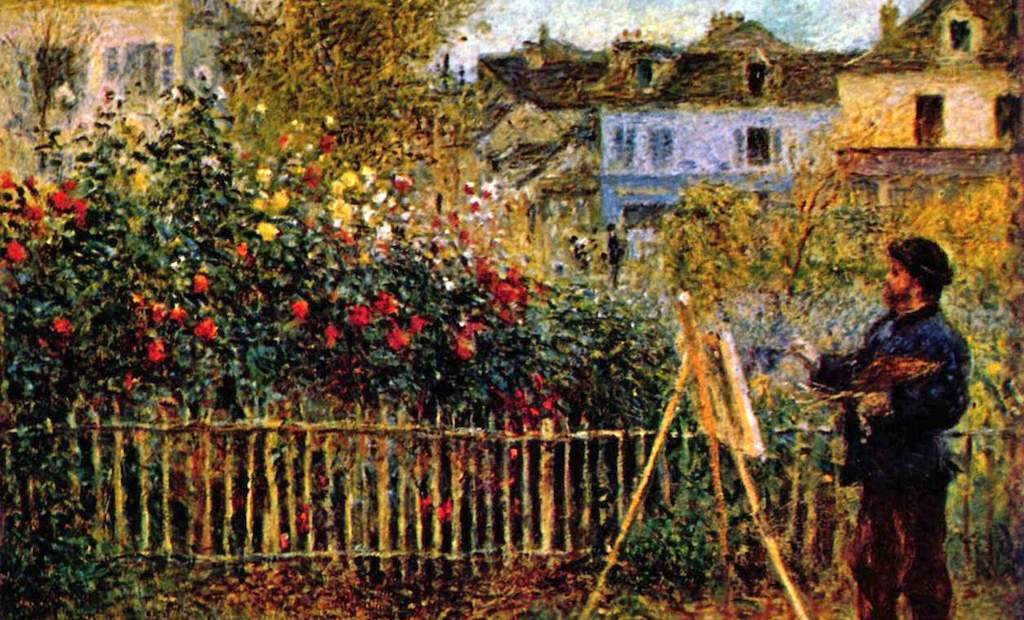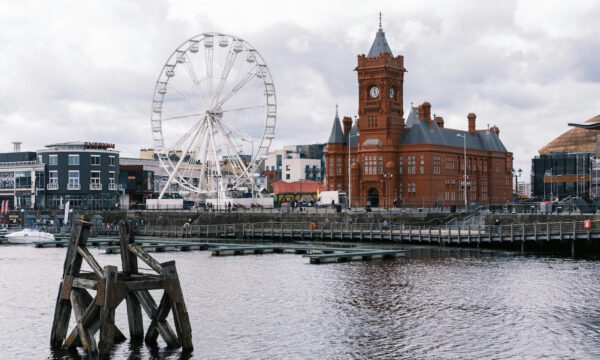Four of Pierre-Auguste Renoir’s lesser known pieces

There are very few artists as notable as Pierre-Auguste Renoir. The French painter, who was born in 1841, is best known for being one of the leading figures of the Impressionist movement. However, his oeuvre includes much more than pure Impressionism. As one of the most avid lovers of art, he experimented with many styles and techniques, and his appreciation of figure painting meant he often disregarded the rules of the movement he was spearheading.
Throughout his long history of painting, Renoir has created many artworks that have lasted the test of time, still famous to this day. Lots of his works aren’t as known, though, and these should be just as appreciated by art lovers. Here are a few notable examples.
1. Claude Monet Painting in His Garden at Argenteuil
Claude Monet, another very famous painter of the movement, was extremely close friends with Renoir. “For several years, his close association with Monet established the characteristics of the movement,” explain the experts at Willow Gallery. This painting is representative of this beautiful friendship and deep connection and, indeed, also one of the main elements of Impressionist art — painting en plein air (outside).
During the time the two spent in Argenteuil, a commune located to the northwest of Paris, Monet was slightly obsessed with the garden. He painted it extensively, depicting, in a classic Impressionist fashion, the seasons passing. In this artwork, Renoir captured his friend painting the bright red dahlias at his easel. The houses around are visible, and the garden is the focal point of the scene, evoking a sense of calmness and serenity.
2. The Seine at Asnières (The Skiff)
Another Impressionist masterpiece, The Seine at Asnières was painted in 1879 and depicts two women on a boat in the affluent Chatou commune of the Île-de-France region. The sun is seen showing through the trees and reflected on the river, all painted with the traditional Impressionist brushstrokes and avoiding the colour black to emphasise the way light hits the scene.
The piece’s focal point is the skiff, while the women are painted as almost silhouettes — there are no clear details of their clothes, expressions or even facial features. Instead, the viewer is meant to take in the image as a whole, a fleeting moment trapped in time. The use of patchwork colours detached from one another adds an air of drama to the painting, while still inspiring the content and happy emotions Renoir is known for.
3. L’Estaque
Besides Monet, Renoir was really great friends with another artist in the Impressionist group – Paul Cézanne – with whom he stayed after a trip to Italy in 1882. The pair resided in L’Estaque in the South of France, near Marseilles, and used it as a working holiday. By this point, Renoir was already renowned, and his travelling helped him crystallise his art.
At L’Estaque, he wrote in a letter to salonist and art collector Marguerite Charpentier an explanation for his extended absence: “I am in the process of learning a lot, and the longer I take, the better it will be… I have perpetual sunshine and I can scrape off and begin again as much as I like. This is the only way to learn.”
The Mediterranean countryside inspired this painting, with bright greens, blues and purples emphasising the ethereal feeling of the coast. From between trees, the viewer is invited to take a stroll with Renoir, walking the sun-splashed path alongside him. Comfortable and tranquil, L’Estaque is a delightful reminder of Renoir’s perspective of life.
4. Mixed Flowers in an Earthenware Pot
Mixed Flowers in an Earthenware Pot is unique in the sense that, while it still uses some Impressionist techniques, it is not painted outdoors. Created around 1869, it’s a classic painting of flowers in a vase. It features a bouquet of dahlias, asters and sunflowers in a ceramic pot, placed on a tablecloth alongside some pears. The paint is applied in two different ways for the flowers and the porcelain vase — the floral arrangement received the quintessential short strokes of the Impressionist way, contrasted with the more solidly drawn pot for which he used smoother brushwork.
Seemingly a simple painting of an object often used in still life art, this piece actually bears some historical significance due to its connection to Monet. The two artists sat across the same vase, painting the flowers together side-by-side.
The editorial unit
Photo: Monet Painting in His Garden at Argenteuil (Directmedia Publishing/The Yorck Project)






















Facebook
Twitter
Instagram
YouTube
RSS